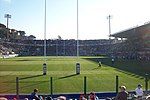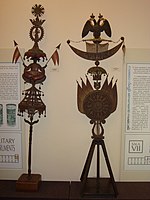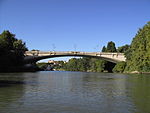Stadio Nazionale PNF
1911 establishments in Italy1934 FIFA World Cup stadiums1957 disestablishments in ItalyDefunct football venues in ItalyFootball venues in Italy ... and 6 more
Italian sports venue stubsMulti-purpose stadiums in ItalySerie A venuesSports venues completed in 1911Sports venues demolished in 1957Sports venues in Rome

The Stadio Nazionale del PNF (English: National Stadium of the National Fascist Party) was a multi-purpose stadium in Rome, Italy. It hosted three of the 17 matches of the 1934 FIFA World Cup, including the final between hosts Italy and Czechoslovakia on 10 June 1934. The Stadio Nazionale was constructed in 1911, and was renovated in 1928 for the Italy–Hungary international match.The stadium closed in 1953 and was replaced by the Stadio Flaminio in 1957.
Excerpt from the Wikipedia article Stadio Nazionale PNF (License: CC BY-SA 3.0, Authors, Images).Stadio Nazionale PNF
Largo Mario Mazzuca, Rome Parioli
Geographical coordinates (GPS) Address Nearby Places Show on map
Geographical coordinates (GPS)
| Latitude | Longitude |
|---|---|
| N 41.927222222222 ° | E 12.472222222222 ° |
Address
Stadio Flaminio
Largo Mario Mazzuca
00196 Rome, Parioli
Lazio, Italy
Open on Google Maps








